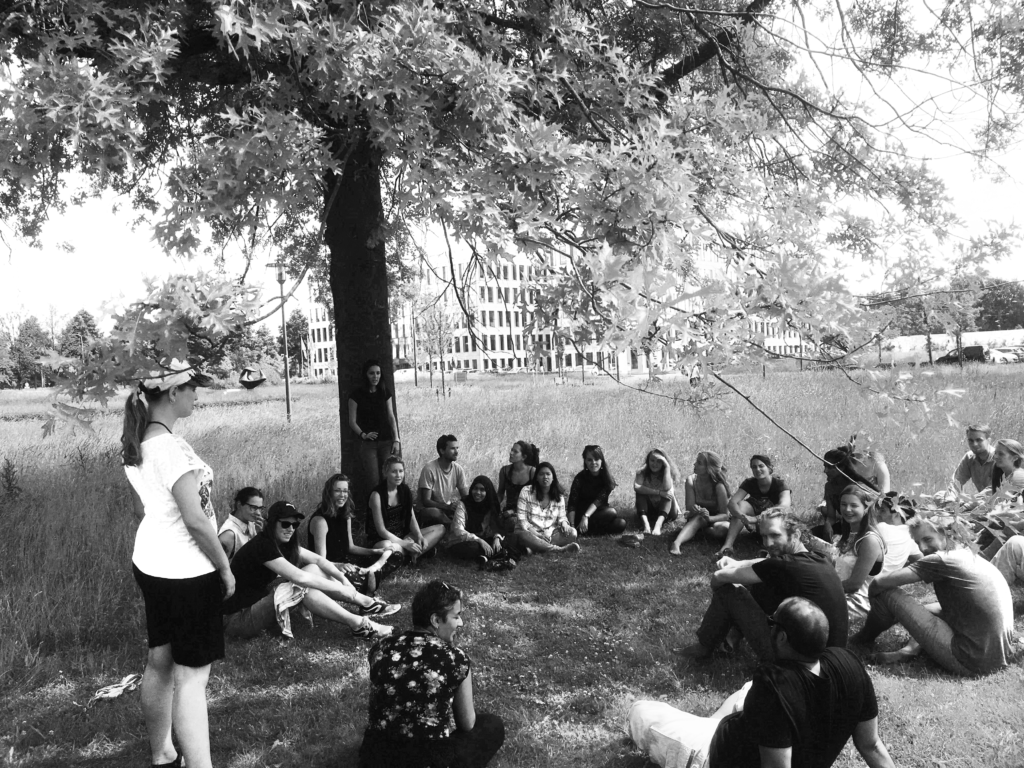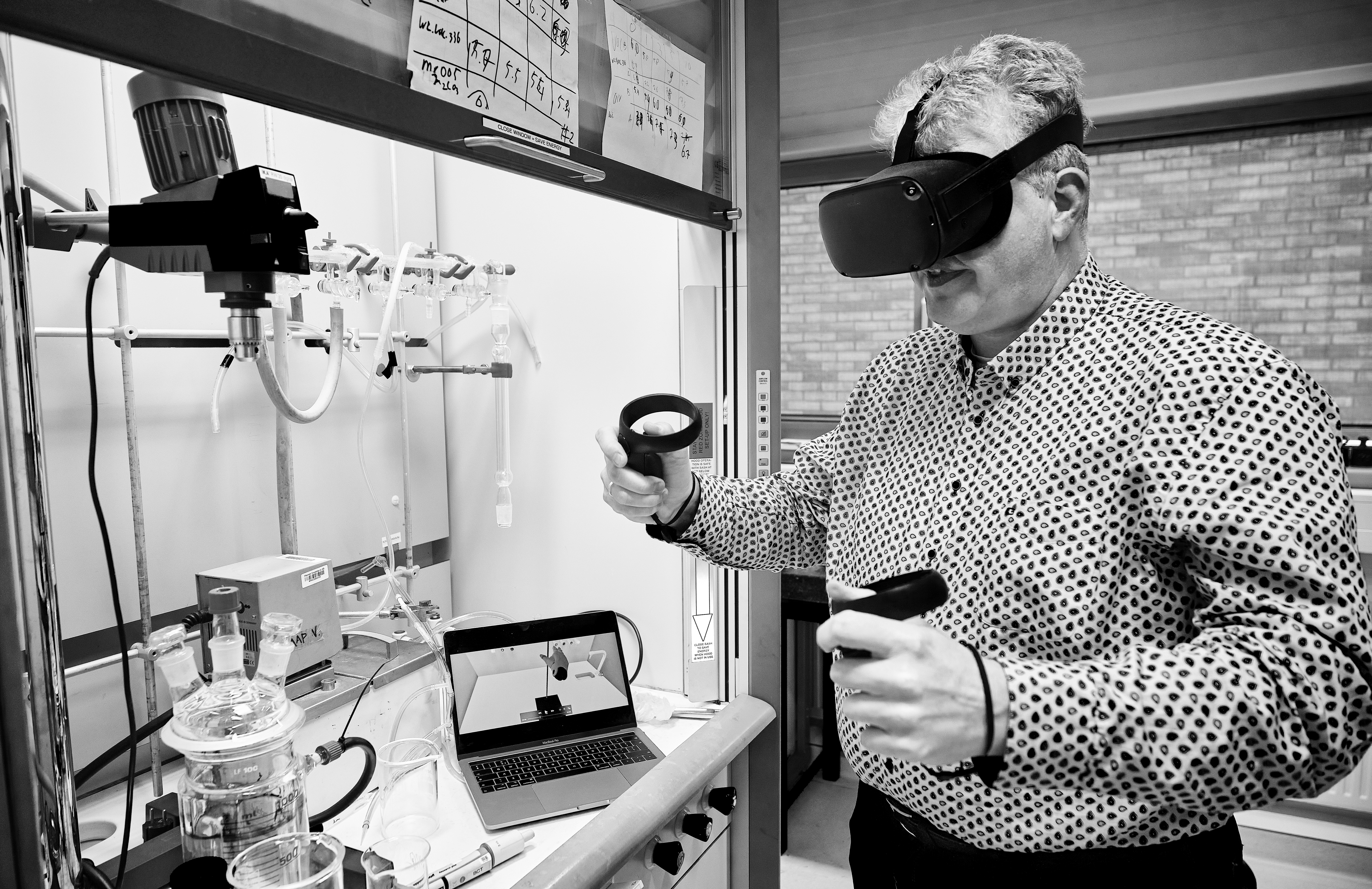Insight: Creating a sense of community and using the outdoors as a learning environment
Arjen Wals (professor of Transformative Learning for Socio-Ecological Sustainability) likes to use creative teaching methods outdoors on campus. When that wasn’t possible because of Covid, he got students to use their own surroundings.
‘Environmental Education and Learning for Sustainability is a creative module in which students work on a product that inspires others to become more involved in issues relating to nature and sustainability. We normally do a lot outdoors: a round of introductions sitting on the grass, theatrical stuff, presentations by students.’
‘Usually about 35 highly motivated students choose the course but now we suddenly had 70, half of whom were doing it because something else got cancelled due to Covid. Yet they have still developed into a close-knit group, even though there were no joint physical activities.’
‘How did we manage this? It all starts with getting to know one another properly. We asked students to make short videos introducing themselves. You can take a different approach, but make sure there is scope for creativity.’
‘Most people don’t feel comfortable with the online setting – and that includes the teachers. Share your doubts as a teacher with the group. If you are open about that, it creates trust and others are more likely to be candid too.’
‘My course is about nature and our surroundings, so it’s green time, not just screen time! We gave students outdoor assignments such as: walk 10 minutes from your home and take a photo of something that makes you think “That’s sustainable”. Then walk back home and take a photo of something where you think “That is totally not sustainable”. Afterwards, the students shared their photos in groups and discussed them. That combination of being outdoors, focusing on their own living environment and then talking about it with one another really energizes students.’
‘I am increasingly aware of what a perfect learning environment the outdoors is. Once the pandemic is over, I plan to keep my lectures online. I will use the time I gain from that to organize more interactive sessions outdoors.’

Innovation: using virtual reality to prepare for lab work.
Together with Han Zuilhof (Organic Chemistry), Bauke Albada (Organic Chemistry) and Harry Bitter (Biobased Chemistry & Technology) came up with the idea of preparing students for practicals by letting them try out things in virtual reality (VR).
Bitter: ‘Two years ago, we set up a small project in which students could use a VR app to practise setting up glass apparatus and carrying out a complex distillation. The coronavirus outbreak sparked great interest in this project because it’s something you can do at home, unlike a live experiment.’
Albada: ‘The VR idea started because there was so much pressure on teaching staff and lab assistants. We wanted to develop something that could relieve that pressure. If students practice at home, they will be better prepared for the practicals. A lot of students get quite nervous about doing lab work. They often have to put together complex setups of fragile glass, sometimes containing explosive chemicals. Practising digitally first makes the students better prepared. It gives them self-confidence and they are then keen to get into the lab.’
‘If you practise in a virtual environment, you can make as many mistakes as you want’
Bitter: ‘If you can practise in a virtual environment, you can make as many mistakes as you want. And you learn a lot from mistakes. You just press reset and start again. At first, we focused on an app with VR goggles but when Covid came, Bauke thought: “Hey, we can do this on the computer.” So he had the app converted to allow that.’
Albada: ‘The app works really well with VR goggles. You use a laser pointer to point to things, pick them up and assemble them. On a PC you use the mouse. We are constantly improving the app. For example, we added a competitive element so now you can see how well you are doing compared with your fellow students. That triggers students to have another go, and they learn from that too. One student was even faster than me last year. Isn’t that great!’
Bitter: ‘You could only put together a distillation setup at first. But now, thanks to a big SURF grant, we are also simulating more complicated synthesis setups. Eventually, we want a system that’s like working with Lego bricks. The basic principle is incredibly broadly applicable. We are chemists so we started with experimental setups for chemistry but you could develop similar blocks for physicists that look like lasers, mirrors, stands and so on.’
Albada: ‘If students have practised a few times in the VR environment, they know exactly what they need to do in the lab. That gives them more scope to absorb the details of the chemical process. That will save a lot of time and frustration. At the end of the assignment, they see a kind of scorecard with tips and comments for doing the experiment in the lab.’

 Harry Bitter of Biobased Chemistry & Technology wearing the VR googles that students can use to practice setting up glass apparatus and performing a complex distillation. Photo: Guy Ackermans
Harry Bitter of Biobased Chemistry & Technology wearing the VR googles that students can use to practice setting up glass apparatus and performing a complex distillation. Photo: Guy Ackermans